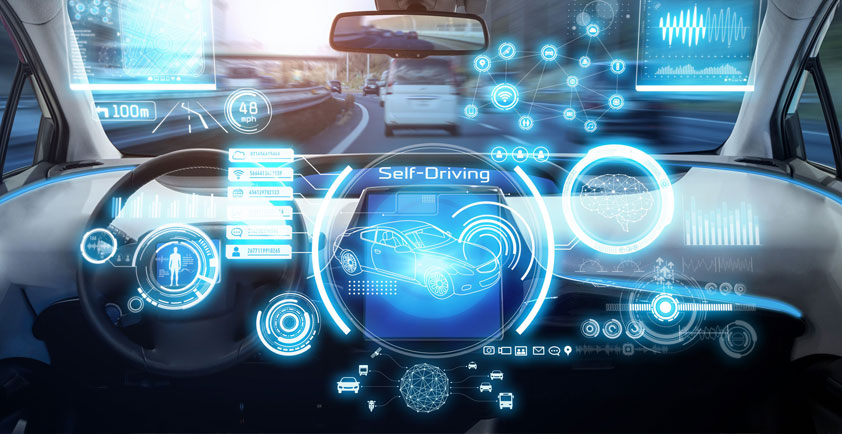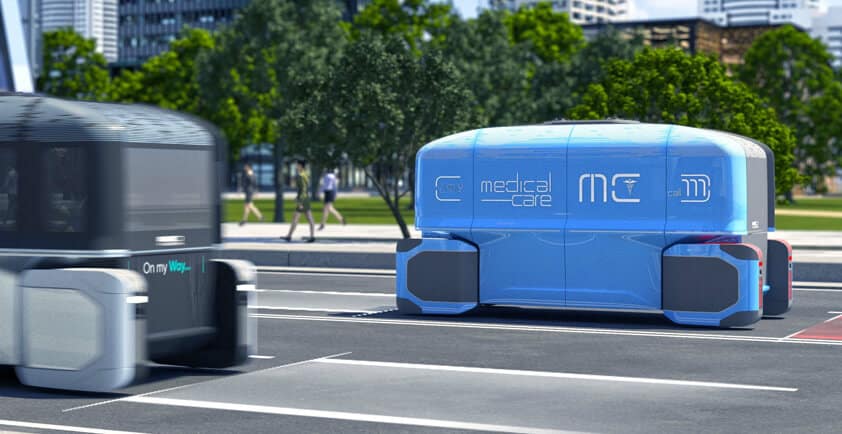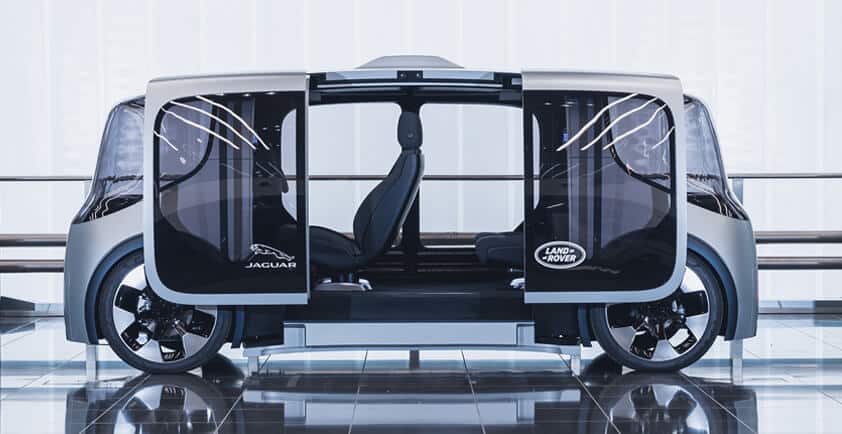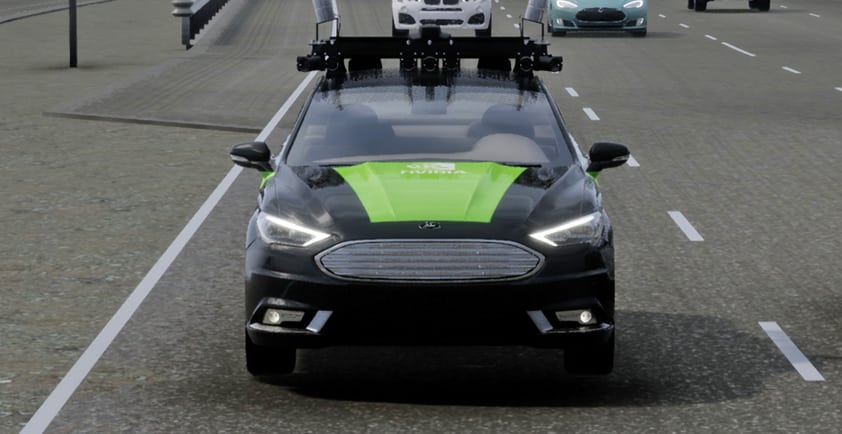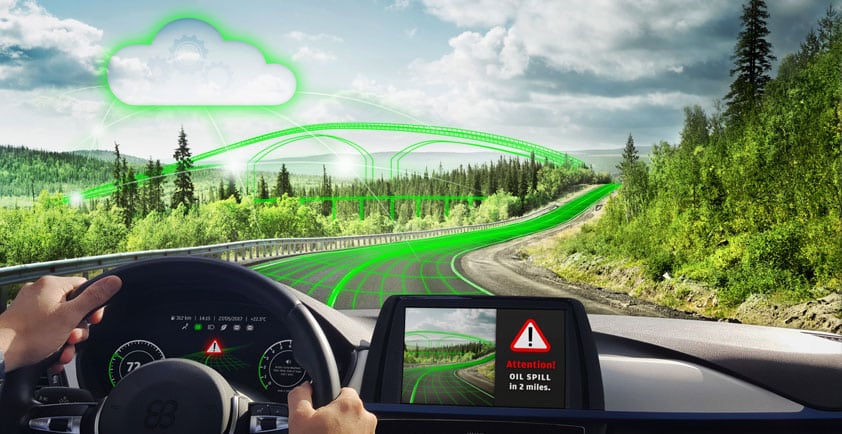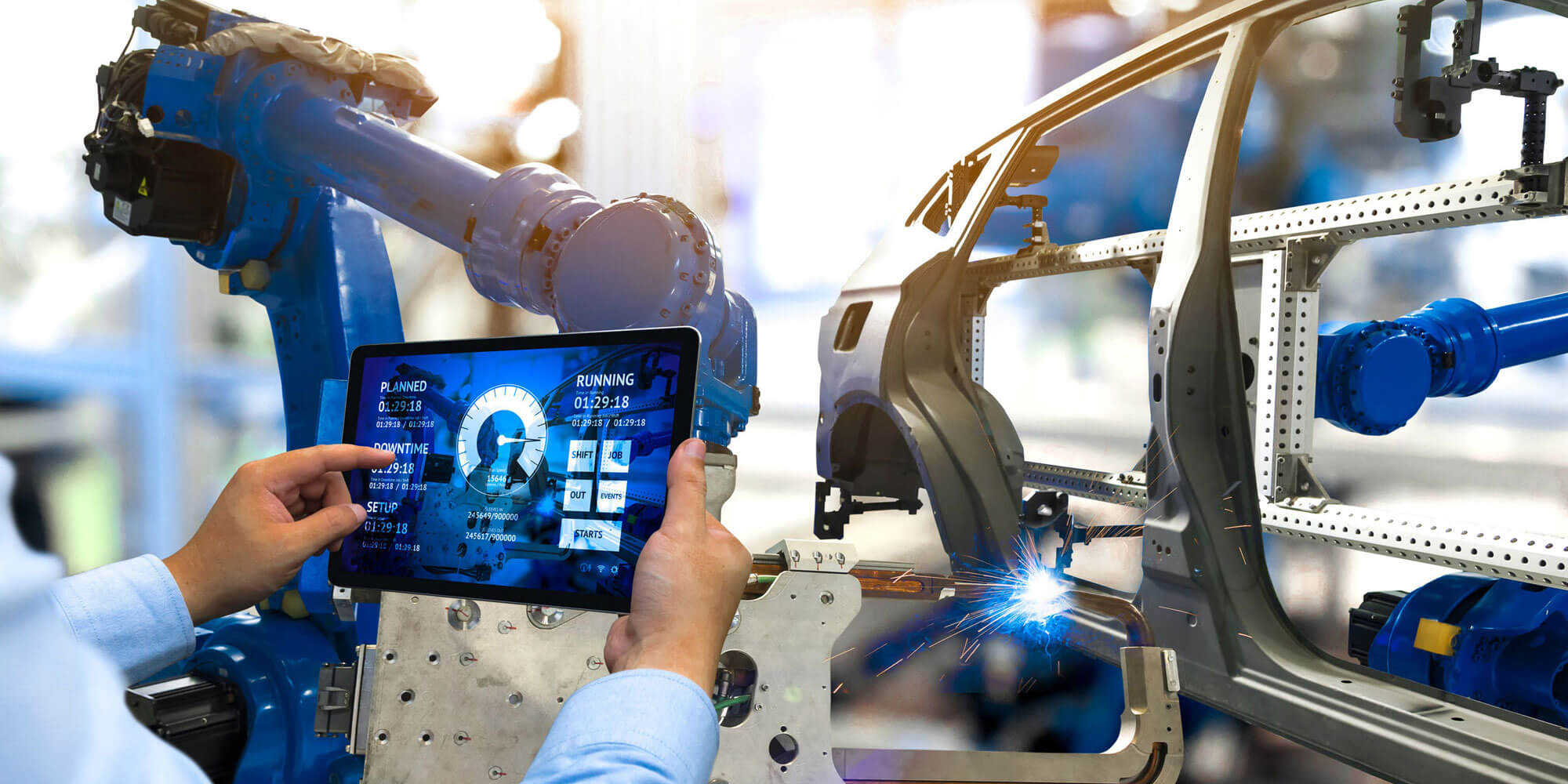
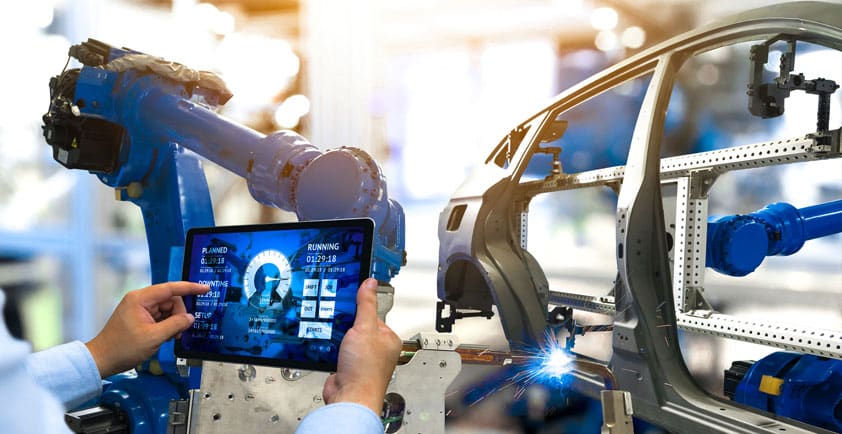
9 TRENDS THAT ARE TRANSFORMING MANUFACTURING
How interconnection can power the 4th Industrial Revolution
World trade in manufactured goods has almost tripled between 2000 and 2017— from $4.8 trillion to $12.2 trillion, according to the World Trade Organization. And just looking at the U.S., in 2018, manufacturing accounted for 11.4% of its gross domestic product.
This increase in manufacturing contributions to the global economy is being accelerated by the industry’s digital transformation worldwide. With the rapid adoption of custom design, telematics, artificial intelligence (AI), internet of things (IoT) and advanced connected services, manufacturing companies are reinventing their revenue and service models while at the same time driving greater efficiency and lower costs. According to PwC, 81% of industrial manufacturing CEOs will rely on operational efficiencies to bolster growth.
To survive, manufacturers must collaborate across regional and global digital supply chains and obtain data-driven insights from multiple digital sources in real time. This strategy requires ubiquitous access to distributed interconnection control points worldwide that can provide secure, high-speed interactions and data exchange between multiple parties and machines.
According to the Microsoft Dynamics 365 report on manufacturing trends, in this Fourth Industrial Revolution:
"Modern manufacturers are no longer just makers, they are the thread that connects the entire lifecycle of a product, and to thrive in this modern environment, they must increasingly rely upon technology to power breakthrough innovations and drive more intelligent operations.
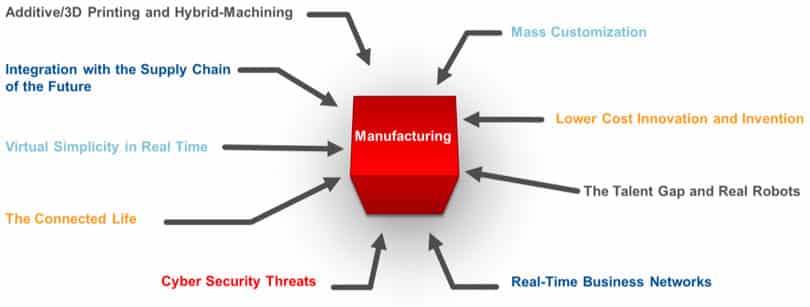

The trends that are transforming manufacturing
There are a number of forces that are converging to create the next industrial revolution in manufacturing worldwide:
Additive/ 3D Printing and Hybrid-Machining: Simplification of design manufacturing and new improved micro lasers are being introduced to create smaller scale components that was previously not possible.
Integration with the Supply Chain of the Future: Manufacturers will still make things, but how they take their products to market in a smarter, slicker manor will change in the "Supply Chain for the Future." Examples include Nike with their bespoke shoes or the automotive industry becoming more engaged with consumers around customization.
Virtual Simplicity in Real Time: Manufacturers are increasingly using real-time augmented reality (AR) collaboration tools (e.g., Microsoft HoloLens) for product research, design and production, which means more high-volume graphical data is going through manufacturing networks and collected in the cloud for product research, design, reviews or display.
The Connected Life: As big data, analytics and IoT move to the main-stream, more manufacturers will look to leverage massive amounts of information in conjunction with interconnected supply chain models to deliver the right goods to customers just in time or even ahead-of-the-need.
Cyber Security Threats: Requirements to ensure the safety and protection of systems and data against hacking and exploitation, as well as maintain regional and global data privacy regulations, are a high priority for manufacturers as the adoption of digital technologies accelerate.
Modern manufacturers are no longer just makers, they are the thread that connects the entire lifecycle of a product…
Mass Customization: A digital economy promises consumers that they can have things their way. This not only includes productization, but also servitization, where customized services provide an added-value component to products.
Lower Cost Innovation and Invention: In a highly commoditized market, the risk doesn’t inherently come from large competition, but from start-ups who aggressively meet new demands in a more cost-effective manner.
The Talent Gap and Real Robots: Robots who "feel" and "differentiate" their programming to do more flexible tasks are on the rise. As a result, 90% of worker time on average could be impacted by intelligent technologies via augmentation or automation.[iv] This is creating a new skills-gap for workers who need to move away from hands-on to machine management.
Real-Time Business Networks: New "Virtual Enterprises" must be as real-time as social networking for their products to succeed. They will need to discover, connect and collaborate with the trading partners and resources they need to operate in today’s dynamic digital world.
Solving manufacturing pain points and limitations with interconnection
The trends outlined above offer tremendous opportunities to manufacturers, but not without some challenges, such as:
> The inability to continually optimize cost performance, limits manufacturing profitability.
> Disconnected product designers, makers and data inhibit effective change and innovation.
> Siloed workforce and processes hinder collaboration inside and outside the organization and slows progress.
> Traditional manufacturing firms are monolithic and do not provide visibility into customer requirements or the ability to control, customize and track production.
> Difficulty in adopting cloud and other new digital technologies slows achieving efficiency and time to market objectives.
> Intellectual property protection is not fully understood, implemented or controlled.
Manufacturing firms can proactively address these challenges by distributing interconnection control points in strategic edge locations locally, regionally or globally. Private interconnection directly and securely connects people, locations, clouds, data and things, enabling more streamlined multi-party/multi-machine information exchange for greater collaboration and timely data capture and analysis for real-time insights.
The upcoming Global Interconnection Index (GXI) Volume 3, a market study published by Equinix, predicts the installed private interconnection bandwidth capacity within the manufacturing sector will grow 57% annually between 2018 and 2022 to 1,547 Tbps. To put that in context, manufacturing private interconnection comprises 12% of the total estimated global interconnection bandwidth across all industries worldwide.
Directly and securely interconnecting with employees, partners and customers, networks and clouds, and systems and data, across a global data center and interconnection platform, drives digital transformation. By leveraging the agility of software-defined interconnection and network virtualization at strategic interconnection control points, you can move your IT infrastructure from a centralized, siloed model to a distributed, integrated model at the edge where your business is happening.
By leveraging private interconnection to distribute core manufacturing IT infrastructure, closer to supply chain partners, digital ecosystems, customers and things at the edge, you can streamline multi-party data exchange using high-speed, low-latency communications. Proximate, direct and secure interconnection optimizes and scales collaboration and the analysis of data coming from a variety of digital sources (e.g., IoT sensors, robotics, machines) for faster operational and customer insights. As new manufacturing ecosystems develop at the edge, where manufacturers and their supply chain partners are moving physically closer, they can more cost-effectively bring products to market faster that best meet their customers’ needs.
Author: Andrew McCreath - Solution Marketing Senior Principal





